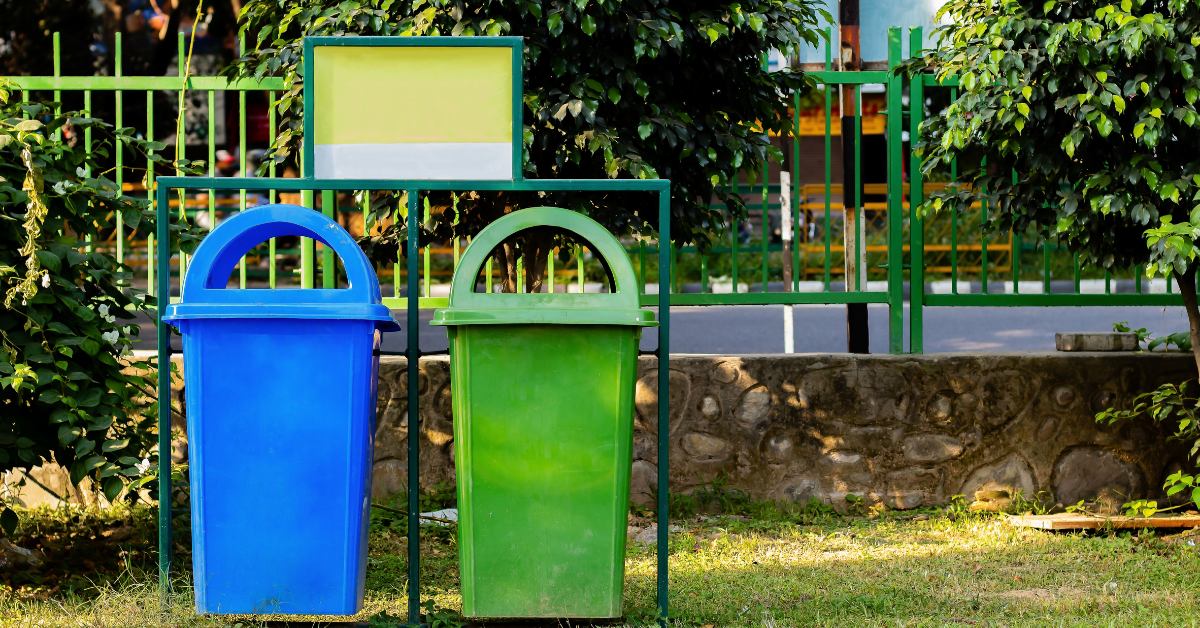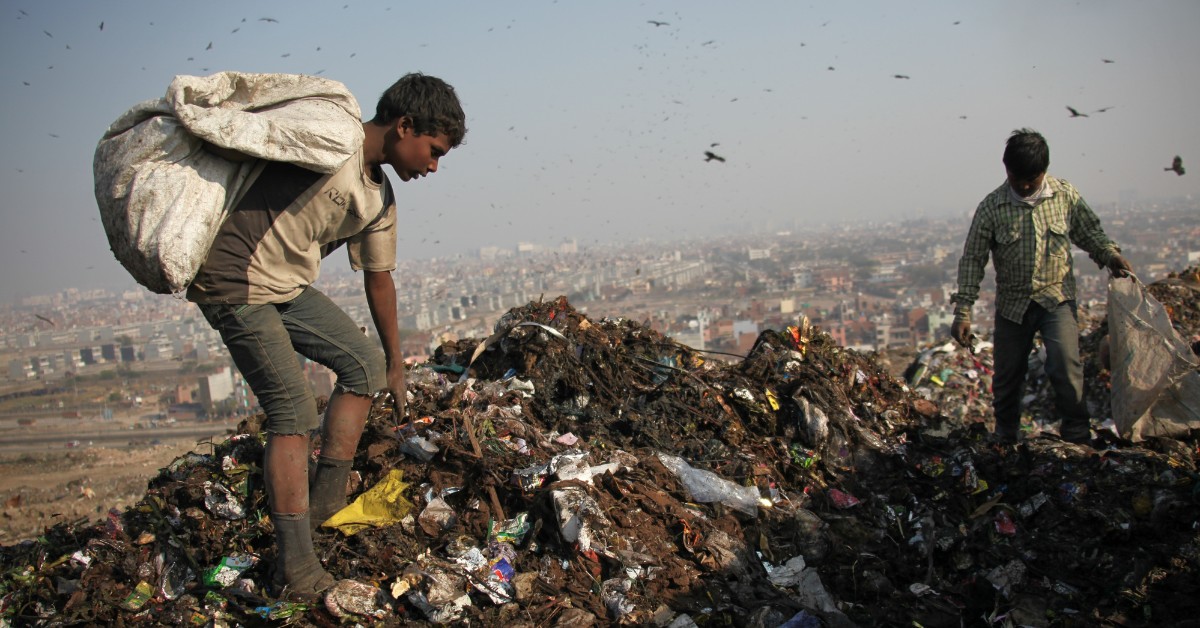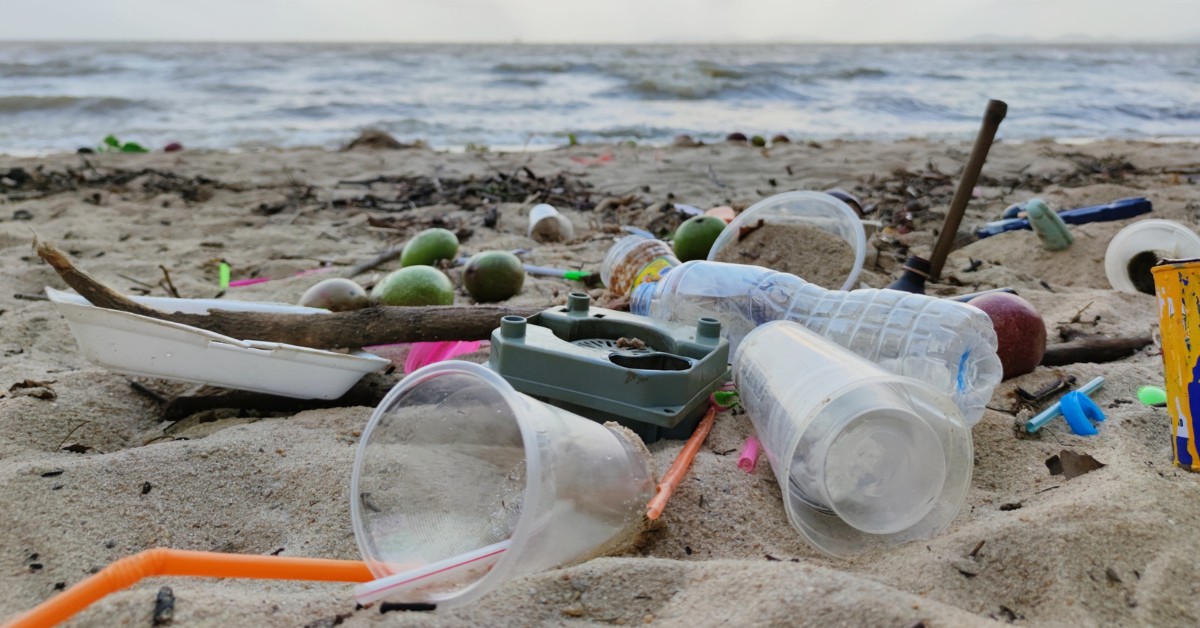Rinse It? Bin It? Reuse It? A Beginner’s Glossary to Sort Your Waste Right
Waste is everywhere — from overflowing bins to plastic-choked landfills. Most of us want to help, but we’re often stuck at step one: figuring out what to do with our waste.
In 2016, the Centre for Science and Environment (CSE) reported that while some Indian cities collect up to 90 percent of their waste, the national average hovers around 50 to 60 percent. Worse, only about 10 percent of that waste is actually treated. The rest ends up untreated in dump sites, polluting our cities, air, and water.
That’s why understanding what we’re throwing away — and where it ends up — is such a crucial first step. Once we know the different types of waste, how to separate them, and why it matters, we’re better equipped to take meaningful action.
Here’s a simple, no-jargon guide to help you start making smarter, cleaner choices today.
Waste 101: The big three
Dry Waste: Items like chocolate wrappers, plastic bottles, newspapers, metal cans and containers. These are usually recyclable and don’t decompose.
Tip: Give it a quick rinse before discarding. Clean, dry waste is more likely to get recycled instead of landing in a dump.
 According to the Ministry of Environment, Forest and Climate Change, India currently generates 62 million tons of waste every year.. Picture source: World Economic Forum
According to the Ministry of Environment, Forest and Climate Change, India currently generates 62 million tons of waste every year.. Picture source: World Economic Forum
Wet Waste: This includes all organic, biodegradable matter — food scraps, vegetable peels, used tea leaves, egg shells. It’s nutrient-rich and great for composting.
Tip: Keep it separate and consider using a composting pot at home or joining a community composting initiative.
Reject Waste: Waste that cannot be recycled or composted, such as sanitary pads, tissues, diapers, and contaminated packaging.
Tip: Wrap such items in newspaper, mark them clearly, and ensure they’re disposed of with care — this helps sanitation workers handle them safely.
What’s actually in our bin?
Municipal Solid Waste: The everyday trash that comes from households, markets, shops — everything from food waste to plastic wrappers to dust.
Tip: Segregating this waste at the source makes a big difference in reducing landfill pressure.
Compostable vs Biodegradable: Compostable items decompose into nutrient-rich soil that supports plant growth. Biodegradable items eventually break down, but not always in safe or useful ways.
Tip: When possible, choose compostable over biodegradable — especially for packaging or food service products.
Hazardous and E-Waste: Batteries, CFLs, tube lights, old phones, paint cans, expired medicines — these contain toxic chemicals.
Tip: Never throw these in your household bin. Contact a local e-waste recycler or check for city collection drives.
 Indian cities will generate approximately 435 million tonnes of solid waste by 2050, according to the Ministry of Housing and Urban Affairs. Picture source: Housesumo.com
Indian cities will generate approximately 435 million tonnes of solid waste by 2050, according to the Ministry of Housing and Urban Affairs. Picture source: Housesumo.com
Multi-Layered Packaging: Found in chips packets, instant noodle wrappers, and toothpaste tubes. These combine plastic and foil, making them extremely difficult to recycle.
Tip: Avoid where possible. If unavoidable, check for brand-led take-back programmes.
Recyclable vs Downcyclable: Recyclable materials, like glass and metal, can be processed and reused multiple times without losing quality. Downcyclable materials, like most plastics, can only be reused once or twice before they become too weak to recycle further.
Tip: Prioritise materials that can be truly recycled instead of those that are only downcycled.
Recycling, upcycling, and more
Recycling: This is the process of collecting, cleaning, and processing used materials — like paper, plastic, glass, and metal — so they can be made into new products. It helps reduce the need for virgin resources and keeps materials out of landfills.
Upcycling: Unlike recycling, which breaks materials down, upcycling turns waste into something new and often more valuable. Think of old tyres turned into planters or glass bottles turned into lamps.
Tip: Get creative with household waste — you’ll reduce landfill pressure and create something unique.
 Recycling is the process of collecting, cleaning, and processing used materials so they can be made into new products. Picture source: Shutterstock
Recycling is the process of collecting, cleaning, and processing used materials so they can be made into new products. Picture source: Shutterstock
Material Recovery Facilities (MRFs): These are specialised centres where collected waste is sorted into recyclable, reusable, and reject materials. They help reduce what goes to landfills and make recycling more efficient.
Tip: Proper segregation at home reduces the burden on MRFs and increases the amount of waste that can be recovered.
Composting: The basics
Home vs Community Composting: A small bucket or pot is all you need to start composting kitchen waste at home. In apartments or shared housing, community composting offers scale and convenience.
Greens & Browns: Wet waste (vegetable peels, food scraps) adds nitrogen—these are your “greens.” Dry waste (leaves, paper, cardboard) adds carbon—these are your “browns.”
Tip: Keep a good mix. It helps your compost break down faster and prevents bad odours.
Vermicompost vs Bokashi: Vermicompost uses earthworms to convert organic waste into high-quality compost. Bokashi is a method that ferments waste using microbes and is suitable for meat, dairy, and cooked food too. Tip: Choose based on the type of waste you generate and the space available.
Where it all ends up
Sanitary Landfill vs Dump Site: A sanitary landfill is engineered to safely contain and isolate waste. Dump sites are unregulated, often illegal piles of mixed trash left to rot.
Tip: Sorted waste has a better chance of being treated properly and staying out of dump sites.
 Segregate your waste right at home to ensure it stays out of dump sites. Pictrue source: Shutterstock
Segregate your waste right at home to ensure it stays out of dump sites. Pictrue source: Shutterstock
Leachate & Methane: Organic waste that ends up in landfills releases leachate (a toxic liquid that contaminates soil and water) and methane (a potent greenhouse gas).
Tip: Composting reduces both leachate and methane generation.
Waste-to-Energy Plants: These facilities incinerate dry, non-recyclable waste to produce electricity. While they reduce waste volume, they can emit harmful pollutants if not carefully monitored.
Tip: These are not a substitute for recycling or composting.
The people who make it work
Safai Karamcharis: India’s sanitation workers who clean streets, collect garbage, and maintain public hygiene. Their work is critical but often invisible.
Tip: Respect their work by segregating your waste, avoiding hazardous disposal, and advocating for their safety and dignity.
Waste Pickers/Kabadiwalas: Informal workers who collect and sort recyclable waste from our trash. They form the backbone of India’s recycling system.
Tip: Segregating your recyclables helps them earn a living and reduces contamination.
 Waste pickers form the backbone of India’s recycling system. Picture source: Shutterstock
Waste pickers form the backbone of India’s recycling system. Picture source: Shutterstock
Swachhta Workers: These workers keep public spaces, toilets, and drains functional. Their work is hazardous and essential.
Tip: Recognise their contribution beyond symbolic gestures by demanding better working conditions and protective gear.
PROs (Producer Responsibility Organisations): Under Extended Producer Responsibility laws, PROs are tasked with collecting back plastic, e-waste, and other materials on behalf of brands.
Tip: Support brands that transparently share their EPR commitments and performance.
Key terms to know
Solid Waste Management (SWM) Rules, 2016: India’s legal framework for managing waste. The cornerstone principle is that everyone — homes, offices, institutions —must segregate waste at source.
Extended Producer Responsibility (EPR): A policy that holds brands accountable for the plastic and packaging waste they generate by requiring them to take it back and recycle it responsibly.
 Every small refusal of single-use plastic counts. Carry your own cutlery and cloth bags wherever possible. Picture source: Shutterstock
Every small refusal of single-use plastic counts. Carry your own cutlery and cloth bags wherever possible. Picture source: Shutterstock
Single-Use Plastic Ban: Several throwaway plastic items like straws and cutlery are banned in India. Enforcing this ban depends on our choices as consumers.
Tip: Carry your own bottle, bag, and spoon. Every small refusal counts.
Bonus: Busting buzzwords
Biodegradable vs compostable vs oxo-degradable: Biodegradable may still take years to break down. Compostable means it breaks down quickly under proper conditions. Oxo-degradable is misleading — it breaks into smaller toxic pieces.
Eco-friendly claims: Many products claim to be ‘natural’ or ‘green’ without proof. Check for certifications and ask: Can it be reused, composted, or recycled?
Zero-waste mindset: Zero waste doesn’t mean producing no trash at all — it means trying to send as little as possible to landfills. That can start with just one small change, like composting kitchen waste or saying no to plastic bags.
Edited by Khushi Arora
News